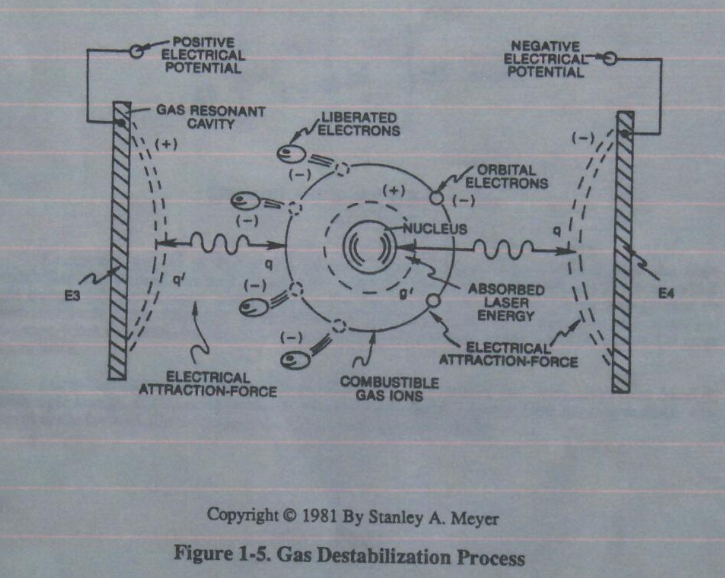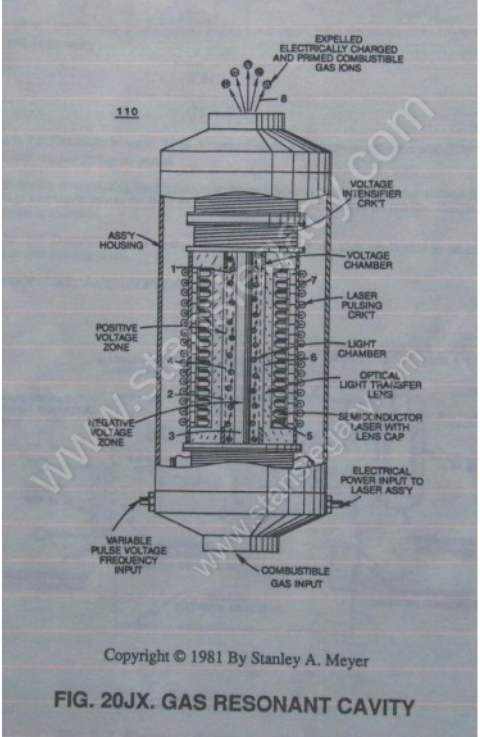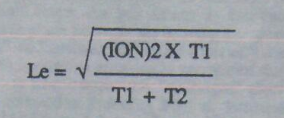Electron Extraction Process
Whereby
Laser or light intensity is variable as to duty cycle on/off pulse-frequency from 1 Hz to 65 Hz and above, and, is given by
Le is light intensity in watts; T1 is current on-time; T2 is current off-time; and (ION) = RMS value of load current during on-period.
By varying or regulating laser intensity in direct relationship to applied pulse-voltage frequency and voltage amplitude causes the inert gas atom of Argon (Ar) to become a positive charged gas ion having missing electrons.
The Gas Destabilization Process with Laser Injection is, also, applicable to other types of airborne or free-floating atoms.
Electron Extraction Circuit (BB) of Figure 1-7 removes, captures, and consumes the "dislodged" electrons (from the gas atoms) to cause the gas atoms to go into and reach "ion-state," forming highly energized gas atoms having missing electrons.
Resistive values (R4, R6, R7, and dielectric constant of gas Rg) and isolated electrical ground (W) prevents "electron-flow" or "electron deflection" from occurring within circuit (BB) during pulsing operations (at resonant frequency) and, therefore, keeps the gas atoms in ion state by "NOT" allowing electron replacement to occur or take place between the moving gas atoms.
 The "dislodged" negative charged electrons are "destroyed" or "consumed" in the form of "heat" when Amp Consuming Device (S) (such as a light bulb) is positive electrically energized during alternate pulsing operations.
The "dislodged" negative charged electrons are "destroyed" or "consumed" in the form of "heat" when Amp Consuming Device (S) (such as a light bulb) is positive electrically energized during alternate pulsing operations.
Laser activated or laser primed gas ions repels the "dislodged" electrons being consumed, as illustrated in Figure 1-5.
The Electron Extraction Process (BB) is, hereinafter, called "The GAS RESONANT CAVITY," as illustrated in Figure 1-7 as to Figure 20JX.
 |
 |

